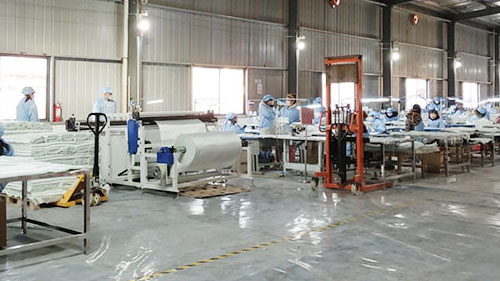Welding Blankets: Types, Applications, and Top Picks
Overview: Explore welding blankets: Extra Heavy Duty to Light Duty types, applications, and benefits of HT800 & silicone coated blankets. Enhance workplace safety and efficiency.
Welding blankets are essential safety tools in industrial and construction settings, designed to protect workers and equipment from sparks, heat, and molten metal splatters. Understanding the different types of welding blankets—from Light Duty to Extra Heavy Duty—helps businesses select the right protection for specific applications. In this article, we'll explore the classifications of welding blankets, their uses, and why HT800 welding blankets and silicone-coated variants are gaining popularity for their durability and versatility.

Classification of Welding Blankets by Duty Level
Welding blankets are categorized based on material thickness, temperature resistance, and durability. Each type serves distinct environments, from light workshop tasks to heavy industrial operations.
1. Light Duty Welding Blankets

Material: Often made from lightweight fiberglass (e.g., 0.43mm thickness) .
Temperature Resistance: Withstands up to 550°C .
Applications: Ideal for occasional use in small workshops, automotive repairs, or DIY projects where low-risk spark protection is needed. These blankets are flexible and easy to handle but less suitable for prolonged high-heat exposure.
2. Medium Duty Welding Blankets

Material: Thicker fiberglass (e.g., 0.6mm–0.8mm), sometimes with basic coatings for water resistance .
Temperature Resistance: Effective up to 800°C .
Applications: Used in construction sites, metal fabrication, and shipbuilding for covering equipment or creating temporary barriers against sparks and moderate heat .
3. Heavy Duty Welding Blankets

Material: Dense fiberglass or composite fabrics (e.g., 1.0mm–1.5mm thickness), often with reinforced edges .
Temperature Resistance: Rated for 800°C–1100°C .
Applications: Common in welding-intensive industries like petrochemical plants and shipbuilding, where protection against large sparks, molten slag, and sustained heat is critical . For enhanced safety, multiple layers are recommended for high-risk tasks .
4. Extra Heavy Duty Welding Blankets

Material: Reinforced fiberglass with silicone or vermiculite coatings, or specialized materials like ceramic fiber (up to 3.0mm thick) .
Temperature Resistance: Handles extreme heat up to 1100°C–1260°C .
Applications: Designed for high-risk environments such as foundries, aerospace manufacturing, and heavy machinery welding. These blankets provide superior insulation against prolonged exposure to flames and molten metal .
Most Popular Welding Blankets: HT800 and Silicone Coated
As industries prioritize efficiency and safety, two types stand out for their advanced features:
HT800 Welding Blankets
The HT800 is a heat-treated fiberglass blanket known for its balance of strength and affordability. Key attributes include:
Temperature Resilience: Withstands up to 550°C .
Material Composition: Made from E-glass fiber with a plain weave, providing reliable protection against sparks and heat in medium-duty applications .
Benefits: Lightweight (approximately 830g/m²) yet durable, it’s certified for safety standards like the International Maritime Organization (IMO), making it suitable for shipbuilding and metalworking .
Silicone Coated Welding Blankets
These blankets feature a silicone-rubber coating on fiberglass fabric, enhancing durability and flexibility. Advantages include:
Enhanced Protection: Silicone coating adds water resistance, abrasion resistance, and improved tear strength .
Temperature Performance: Effective up to 550°C, with some variants rated for higher temperatures .
Versatility: The coating allows the blanket to conform to uneven surfaces, ideal for pipelines, complex machinery, and outdoor welding where moisture or chemicals are present .
Application Areas by Industry
Welding blankets are tailored to diverse sectors:
Shipbuilding & Repair: Heavy-duty blankets protect against sparks during hull construction .
Petrochemical Plants: Silicone-coated blankets isolate welding zones from flammable materials .
Construction and Automotive: Light to medium-duty varieties shield workers during cutting or welding in confined spaces .
Aerospace and Energy: Extra heavy-duty options, like ceramic fiber blankets, safeguard critical components from extreme heat .





